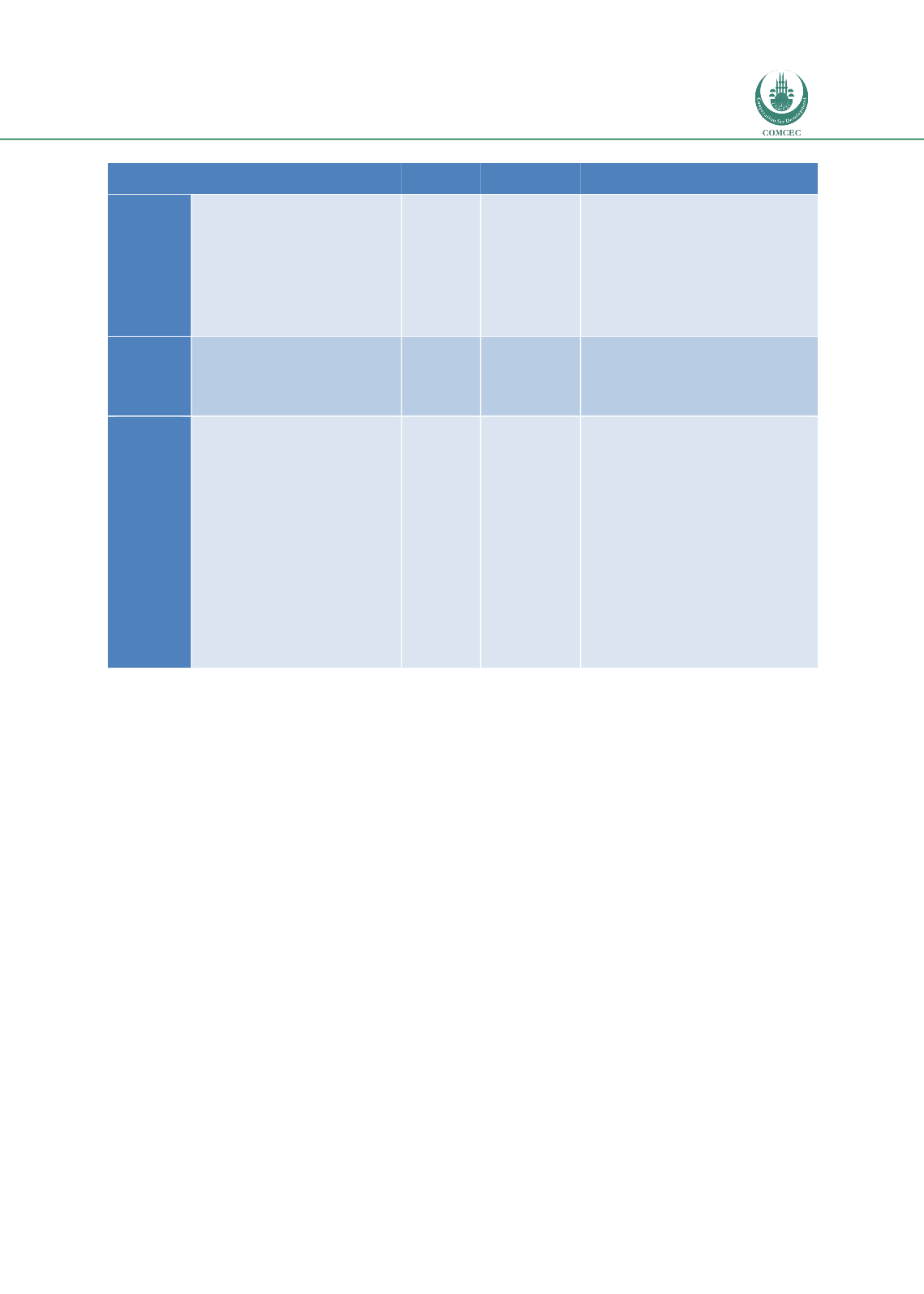

Reducing Postharvest Losses
In the OIC Member Countries
53
Fish chain
stage
Cause of Losses
Main type
of losses
Geographical
areas
Losses reduction strategy
Transport
and
distribution
Delays in packing, loading,
transport causing spoilage;
Careless handling resulting in
physical
damage
and
fragmentation of smoked fish;
Poor
road
and
transport
logistics;
Inappropriate vehicles
Remoteness of fishing villages
Physical,
Quality
Developing
countries,
especially in
Sub-Saharan
Africa
Use of ice/insulated boxed for fresh
fish;
Appropriate packaging such as rigid
containers;
Proper packing before transport
Storage
Absence of or poor storage
facilities/cold rooms leading to
spoilage;
Insect infestation;
Mould growth
Physical,
Quality,
Nutritional
Developing
countries,
especially in
Sub-Saharan
Africa.
Properly designed stores
Good hygienic practice
Pest prevention
Store management and product
rotation (first in first out)
Marketing
Oversupply of fish
Lack of buyers
Insect infestation
Under-utilization
of
some
species for fish meal;
Mismanagement of fish products
imports.
Quality,
Economic
Worldwide
Developing
countries,
especially in
Sub-Saharan
Africa (insect
infestation).
Proper market infrastructure and
management
Implementation
of
food safety
legislation
Use of ice/insulated boxes or other
preservation techniques;
Exploiting the economic potential of
sustainable by-catch;
Promotion of value added products
from low value fish species;
Raising public awareness on fish
quality and food waste;
Access to market information;
Access to more rewarding markets;
Local and better data collection for
just-in-time production and marketing.
Fisheries in the OIC Countries
The study covers 57 countries ranging from Guyana in the west to Indonesia in the east. As a
first step, the relative importance of the fisheries sector in each country was assessed. This
was based on the following:
a)
Gross volume of fish landed
b)
Economic importance: This was assessed on the fish produced per head of population.
c)
Importance to food security: This was assessed on the basis of fish consumption per head
of population per year.
Using the above, the importance of fisheries was ranked as follows:
a)
Very important: The country is a leading producer or the sector is a major contributor to
livelihoods
b)
Important: The sector plays a significant role in the country’s economy or livelihoods.
c)
Neither important nor unimportant: the sector exists but is not leading economic or social
driver.
d)
Fairly unimportant: Fisheries and aquaculture is comparatively marginal in the national
economy
e)
Completely unimportant: The fisheries sector is virtually non-existent.
The purpose is to undertake a rapid segmentation to focus further study. This is shown
graphically i
n Figure,below.
















